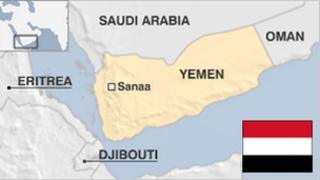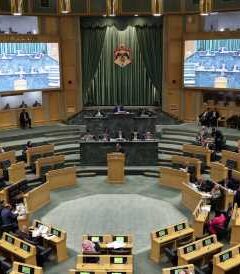Home » Middle East »
Yemen country profile
Despite its ancient roots as the crossroads of Africa, the Middle East and Asia, the modern Republic of Yemen is a relatively new state.
It was created after communist South Yemen merged with North Yemen in 1990, following years of strife, but tensions have never been far below the surface.
A fresh wave of protests in 2011, inspired by the Arab Spring uprisings in Tunisia and Egypt, forced President Ali Abdallah Saleh to resign.
In the ensuing turmoil, the Houthis seized much of the north and west of the country, while Saudi-led forces intervened to support the internationally-recognised government based in the south.
By 2015 Yemen had plunged into civil war and a grave humanitarian crisis, exacerbated by the presence of the al-Qaeda and Islamic State jihadist groups.
See more country profiles – Profiles compiled by BBC Monitoring
FACTS
Republic of Yemen
Capital: Sanaa
Population 27.5 million
Area 536,869 sq km (207,286 sq miles)
Major language Arabic
Major religion Islam
Life expectancy 63 years (men), 66 years (women)
Currency Yemeni riyal
LEADERS
President: Abdrabbuh Mansour Hadi
Abdrabbuh Mansour Hadi came to power in 2012, after Ali Abdallah Saleh stepped down in a bid to end protests at his long period of authoritarian rule.
Mr Hadi briefly resigned in January 2015 and fled to Saudi Arabia when Houthi Shia rebels took over the capital, Sanaa.
He returned to set up a temporary capital in the main city of the south, Aden, with the support of loyalist forces and Saudi-led troops.
The Houthis claim that their revolutionary council in Sanaa, headed by Mohammed Ali al-Houthi, is the legitimate government, but the international community backs Mr Hadi.
MEDIA
Yemen’s media has been polarised since the political power struggle erupted into open warfare in 2015.
TV and radio are vital elements in the media scene, and state TV is caught in the tug-of-war between the Houthis and the Hadi government.
The internet has been prone to shut-down by the Houthi-controlled communications ministry.
TIMELINE
Some key dates in Yemen’s history:
1839 – Aden in South Yemen comes under British rule. When the Suez Canal opens in 1869, it serves as a refuelling port of strategic importance to the British empire.
1918 – North gains independence with the departure of Ottoman forces.
1969 – South Yemen gains independence from Britain. Marxists take power, renaming country People’s Democratic Republic of Yemen and reorienting it towards Soviet bloc.
1990 – The two Yemens unite.
1994 – Brief war of secession ends in defeat of southern separatist forces.
2000 – Al-Qaeda gains prominence in Yemen, ushering in a period of terrorist attacks.
2011 – Arab Spring protests spread to Yemen; President Saleh agrees to hand over power to his deputy, Abdrabbuh Mansour Hadi.
2014 – Houthi Shia rebels overrun the capital, plunging country into civil war and prompting a Saudi-led coalition to intervene to stop them from gaining more ground.
Source: Read Full Article



